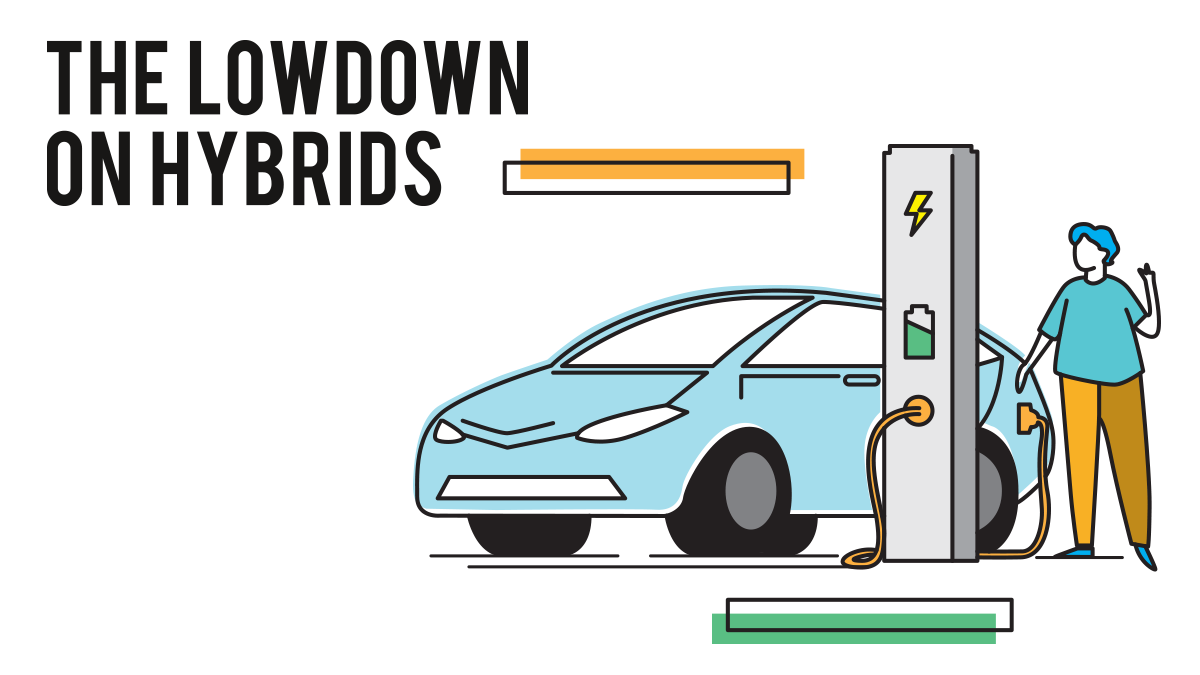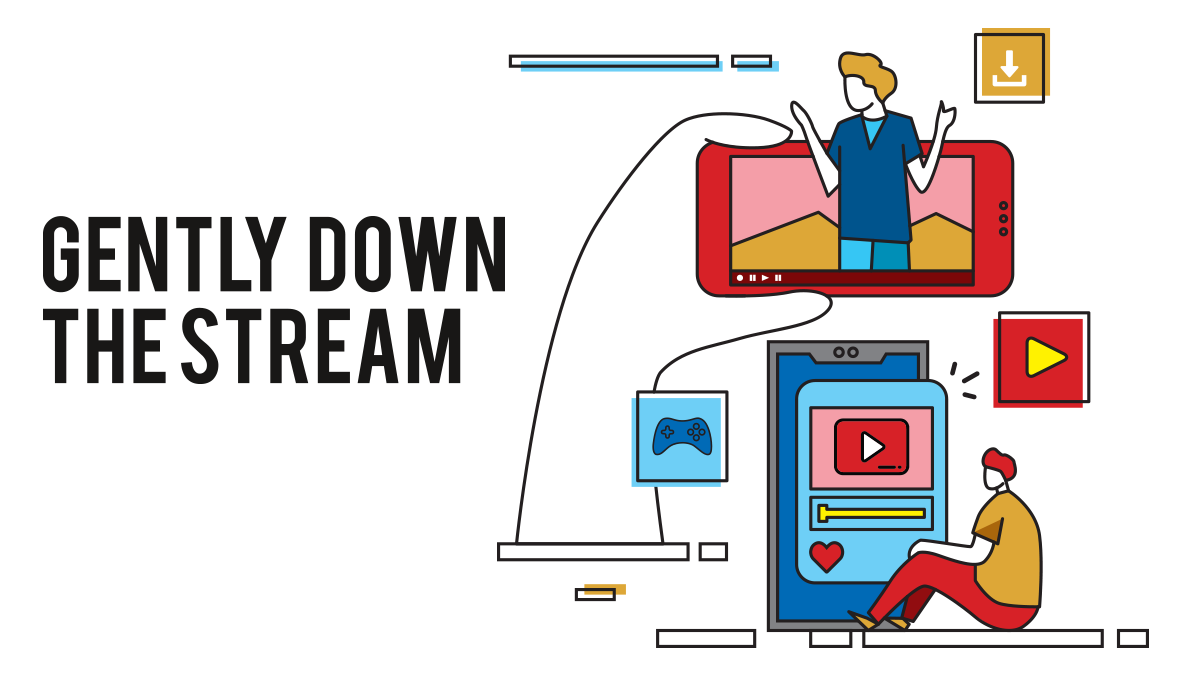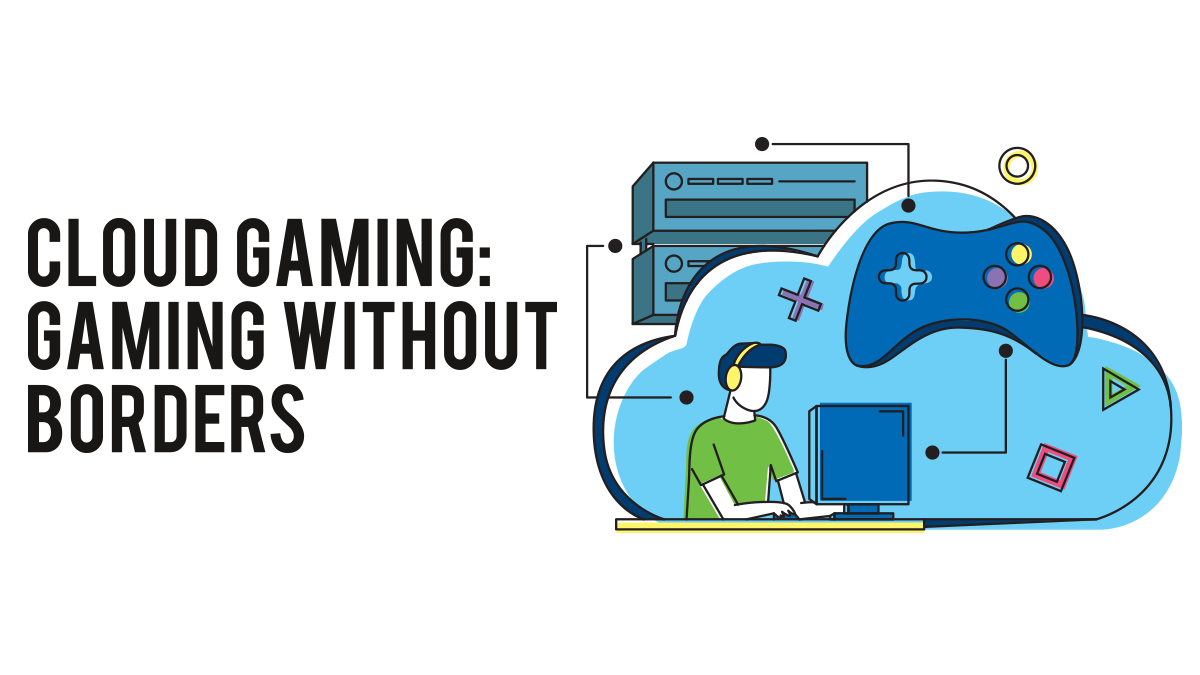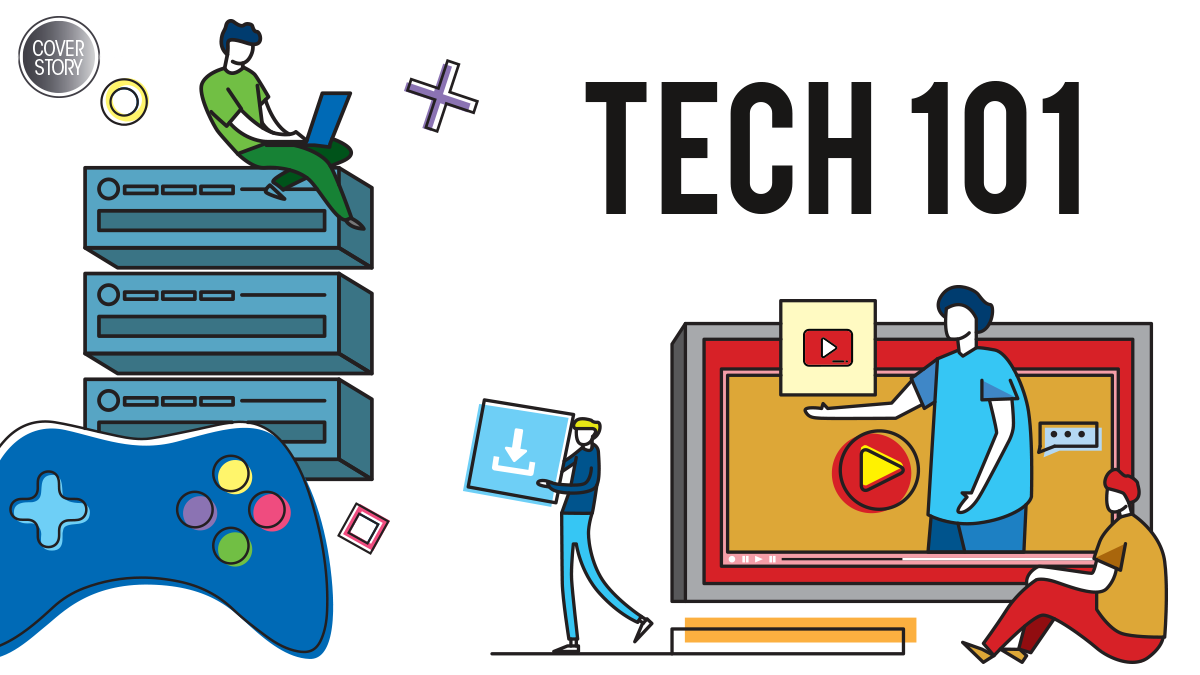Given the pace at which technology progresses, coming across things that might need a little extra work to comprehend is ok. In this month’s Cover Story, we take a look at some of the newest tech to hit the scene, and try to explain just how it is they work. From gaming, to cars, and video streaming, we’re breaking things down so you have a better idea of what’s going on. Get ready to take some notes, class is now in session.

Climate change is well and truly upon us. More than just freak mood swings of our home planet, this is a real and actual problem that we’re all called on to try and address. As individuals, there are a lot of things we can do to stem the spiral into planetary destruction—small everyday things that will cumulatively have a positive impact on how our planet fares. We can waste less food, have fewer children, fly less, and use less fuel. The last one is something that hits hard, particularly here in a country where terrible traffic leads to insane fuel consumption and fuel costs. One of the ways we can achieve this last goal, is to use better, less wasteful automobiles. This is where hybrids come in. Before you make the jump into hybrids, it would be good to educate yourself as to what they are, how they work, and what they mean for you, the everyday driver or passenger.
What’s a hybrid?
While most of the vehicles on the road right now solely use internal combustion to generate the energy required to get itself and its passengers from point A to point B, hybrid cars have two (or more) means of getting moving. Today, this is typically electric motors, and batteries to store the energy necessary to power said motors. While similar, electric vehicles, such as those by Tesla, Nissan, and other manufacturers, don’t qualify as hybrids, as they rely solely on electricity stored in batteries to get going.
The world of hybrid vehicles is quite broad, but for the purposes of this explanation, we’ll go into electric hybrids, which are currently available in the local market.
There are two types of electric hybrids available to consumers today. The first is the full hybrid, which can run solely using its electric motors, or solely on internal combustion. These vehicles are notable for having electric motors of sufficient power to move the vehicle, and large enough battery banks to sustain electric propulsion for a practical range.
The second is the mild hybrid. These don’t quite have the power to run without burning fuel, though the electric system does provide a boost, easing the load on the engine, and storing energy that would otherwise be lost. These might not deliver the same savings as full hybrids, but still have theoretically better fuel numbers than an equivalent non-hybrid counterpart.
Both mild and full hybrids are in production now, with more and more manufacturers releasing models every year.
How do they work?
In a nutshell, hybrids take an electric motor (or motors), a battery bank, and a conventional gas or diesel engine, and bring them together to give better mileage on your drive. Full hybrids have the option to run solely on battery power depending on driving conditions, and in doing so dropping fuel consumption down to zero. Both mild and full hybrids also use power stored in the battery banks to assist the internal combustion (IC) engine during hard acceleration, and to decrease fuel consumption in regular driving. Both allow secondary systems to run on electric power when the engine isn’t running, and they can use electric power when coasting or stopped.
The astute among you might be wondering where the power to charge the batteries comes from. That’s a totally valid question. There are a few ways hybrids recharge their batteries. The first, and simplest to understand is a method employed by plug-in hybrids. As the name implies, these kinds of vehicles have batteries that can be recharged by power from the electric grid—essentially a wall socket. Not all hybrid vehicles offer this as an option, but it does exist. These tend to have greater all-electric range than other hybrids, and offer a lot of the advantages of pure electric, without the dependence on charging stations.
A second source of power for charging the batteries, is the internal combustion engine itself. Vehicles can have a secondary generator to charge the batteries, or use spare engine power to top the batteries up.
The most elegant and clever way hybrid batteries get a boost is through regenerative braking. This takes the electric motor (or motors, as the case may be) and turns them into generators when braking, taking the energy of the moving car, and turning it into energy. Basically, the motors turn into dynamos, charging the batteries while slowing the vehicle down.
Hybrids typically use some combination of those systems to keep batteries running, and since you have a fully-functional IC engine under the hood, you don’t really have to worry about running out of power anyway.
What are the disadvantages?
It’s not all rainbows and unicorns when it comes to hybrids. There are a few concerns that have to be considered, not the least of which is a more complicated vehicle on the whole. There are a lot of systems that have to work in concert to get the thing moving. Greater complexity means an increased chance of something going wrong, though a good brand with good service should mitigate that somewhat.
Another thing that goes hand-in-hand with complexity is cost. Even with the fuel savings delivered by a hybrid vehicle, the math still puts it as more expensive than a pure IC model of the same, or similar vehicle. If absolute savings are what you’re after, the numbers aren’t quite there for the hybrid yet. Still, climate change, so.
There’s also the matter of overall environmental impact. Batteries have a lifespan, and need to be replaced. The impact of improperly disposing of these cells can be as bad, if not worse, as burning fuel. Part of the responsibility of owning a hybrid has to be proper reuse, recycling, and disposal of spent cells. Most manufacturers have systems in place to make sure that is taken care of properly, and it is up to the consumer to make sure they follow those processes.
In any case, with better and better hybrids coming out, the benefits are quickly overtaking the shortcomings. Manufacturers are making strong cases for the hybrid, and it’s certainly something that we, the consumers, should strongly consider.

Subscribing to video streaming platforms is just one of the numerous ways to de-stress in this fast-paced world. Giving people instant access to various genres online, these digital media platforms give access to massive amounts of content globally. With just one tap, you can travel from one amazing world to another, even if outside the comfort of your home. And with its growing traction, video streaming has certainly revolutionized the local media landscape.
Despite its massive popularity and many subscribers, even tech-native millennials, do not know the technology behind these popular video streaming apps.
From analog to digital
The roots of media streaming can be traced back as far as 1991, with Starlight Networks and RealNetworks being pioneers for video and audio streaming. The term itself was used to describe video-on-demand and later, live video simulcast on IP networks. Specifically used for broadcasting, the concept aimed to break geographical limitations by news and sports events over the Internet. Further developments in video and audio streaming make it more accessible to consumers, paving the way for discovery of cable television, which used analog signals for broadcasting exclusive and pay-per-view shows
to its subscribers.
As the world went digital, the media industry needed to keep up with advancements. Television networks in the United States began the big transition from analog to digital broadcasting seven years ago, a system also adapted by other countries including the Philippines, in accordance with the mandate of the National Telecommunications Commission. This meant a drastic change in media consumption, leading to the creation of the platforms that we’re currently familiar with.
How it works
In a nutshell, video streaming is defined as the continuous transmission of digital content from a big server, to the client through an Internet-connected device. From the moment you tap the play button to watch content on your smartphone, that’s already called streaming. In the case of Netflix, it sends and stores catalogs of TV programs and films through a Content Delivery Network (CDN), a large and geographically distributed network of proxy servers. With a massive amount of data, these servers break down the files into tiny data packets interpreted as high-quality videos when transmitted to supported devices.
Enjoying digital content relies on the speed and stability of the WiFi connection, as well as device compatibility. Some streaming media players take time to load a few seconds at a time, called buffering. This process ensures a seamless and continuous play of videos. However, if a network has to deal with a great deal of latency, or has a slow connection, it can take a long time to buffer.
Current media landscape
Cheaper than cable television, these online streaming services grant cinephiles more mobility and options. Platforms differ in the library of content they offer, unique features such as offline viewing, as well as subscription plans. The availability of shows and movies is mainly anchored on the demand of the audience in a specific region. Some also integrate machine learning into their mobile app to learn and predict the media consumption of their users. This explains the algorithm behind the suggested videos that might appear on the user’s dashboard.
Netflix, an American media service provider, has the most diverse lineup of content internationally, including the ones they have produced, co-produced, and distributed exclusively. Partnering with top TV networks, it has the greatest audience globally, enabling its subscribers to connect multiple devices to one account. For Marvel and Star Wars fans, there’s Disney+ which is owned and operated by The Walt Disney Company. It’s also home to all Disney and Pixar movies, as well as shows from National Geographic. Apple TV and Amazon Prime, while subsidiaries of tech companies, play a mix of original content and licensed acquisitions from various TV networks and production houses. For a quick fix of Korean and Japanese dramas, there’s Viu. To keep up with the changing times, giant cable networks such as HBO, NBC, and Fox have ventured into streaming by launching their respective mobile platforms and adding exclusive features that fans can enjoy. The Philippines’ ABS-CBN followed this structure with IWant, allowing users to watch live video streaming and on-demand content from the network.
To earn millions in revenue and produce their own content, most of the platforms accept advertising placements. The case is different for network-owned platforms who have more control over their shows. Most generate their earnings from charging their subscribers, and through royalties from distributing a limited number of programs and films to other competitors. Making their platforms more interactive, these digital media providers allow their subscribers the freedom to voice out their requested titles.

The fast-paced world of gaming is often criticized as having a very steep barrier to entry. As games get better and better, the hardware necessary to make them run well must likewise increase in capability, and as a consequence, cost. This means spending more and, more money to upgrade your computer to run games competitively. But what if there was a solution where gamers don’t need high-powered rigs? That solution might be here in the form of cloud gaming.
What is cloud gaming
Cloud gaming has gained mainstream traction over the last few years, with Google, Microsoft, and Nvidia each announcing their own cloud gaming platforms. But first, what exactly is cloud gaming?
Cloud, or remote gaming, is basically streaming games over the Internet. It’s something like Netflix or Spotify but for video games. The technology has been around for a while with demos performed on since the beginning of the century. There have been a lot of small start-up companies that have experimented with the concept.
These experiments were conducted via Wi-Fi and were a successful proof of concept that you could play games without any wired connection to the Internet. Further tweaks showed that you could, in fact, play whole games saved on different a device with a connection to the network. It’s not just streaming the files so the game can be executed on your local device. It’s running the game on a remote device, and having the user play on a separate device in an entirely different location.
Google Stadia, Microsoft xCloud, Nvidia GeForce Now, Playstation Now, and Steam Link
Despite its long unnoticed history, cloud gaming only gained traction in mainstream consciousness recently because of new players being involved in its development. Google, Microsoft, Nvidia, Sony, and Steam have all announced their plans for their own Cloud Gaming platforms.
Sony’s Playstation Now platform has been active since 2014. The cloud gaming platform was made for the PS4 so users can play previous generation games available in Sony’s vast online library.
Valve has been working on remote playing for the last couple of years. Back in 2017, Valve enabled remote gaming on Steam, allowing users to stream games over their home network. Nvidia, on the other hand, launched their own remote gaming software GeForce Now in 2015 to allow players access to games across different rigs.
It was the announcement of Google Stadia and Microsoft’s Project xCloud during last year’s E3, that the race to perfect Cloud Gaming really started to heat up. Google came first with the limited launch of Stadia last November 2019 with Microsoft yet to officially launch its platform.
How does cloud gaming work?
Cloud gaming generally works like other streaming services. Your machine takes encoded data from a server via the Internet and decodes it locally on your computer or device.
Regular streaming is a one-way process wherein your device only asks for data from the provider’s servers, and upon receipt, their client decodes it for you. But games involve interactions which means that there’s also input coming from the receiving device. These inputs are received by the server, a corresponding response is given based on that input, and the user sees those inputs make things happen on their end.
Current games take the load off their servers by locally storing some of the game information such as maps and base character models. That is why when you have a bad internet connection your game character sometimes loses all their cosmetics.
Cloud Gaming takes this to the next level by storing all the information in the cloud server. This means that there is no local data saved in your device, which frees up resources. The downside is that you’ll need a particularly robust Internet connection to run the game at maximum settings.
How it will impact the gaming industry
Cloud gaming hasn’t reached its full potential. Critics and tech journalists have pointed out the grim fate of Google Stadia which failed to deliver on its promise, at least in the US trial launch. Initial reviews showed that even with a great Internet connection, latency to the server is still a major issue.
But the Stadia is also a proof of concept that there can be a massive server that could run games. Right now the gaming world is holding its breath in anticipation of Microsoft’s xCloud and how it would fare in a real-life scenario.
Cloud Gaming is still in its infancy stage, but the future is bright. And with the imminent arrival of 5G, with a promise of hundred-gigabit connection, speed and latency issues might soon become a thing of the past.
Words by the Gadgets Team | Artwork by Jezeil Romero
Also published in GADGETS MAGAZINE February 2020 issue
